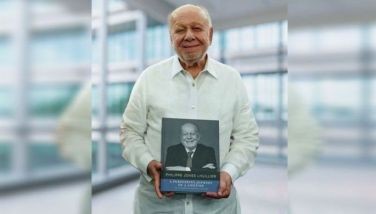Sandbytes
If we were to weigh time in terms of memories, what would the scales reveal? How much would a century, say the 21st century weigh? If we were to go by the calculations of Mr. Charles Stross, the 21st century would amount to 60 to a hundred kilograms. This will be the weight of all the 100 crystals that will contain the “lifelog, a video and audio channel, with running transcript and search index, for six billion human beings for one year.”
Mr. Charles Ross is a science fiction writer from the
If Mr. Stross’ predictions came true, a crystal the size of a grain of sand would contain a year’s memory of an entire planetary civilization — from moments of poignant discoveries and compassion to the inane rawness of the likes of Paris Hilton. It would have not just the Lunas, Amorsolos and BenCabs on record but even the drawing of a missing
This technology is not as sci-fi as it may sound. In 1990, an IBM scientist Don Eigler with his colleagues, made scientific record, when they spelled out the letters “IBM” using 35 xenon atoms. Technology grows at an exponential rate so you can imagine how this atomic writing technology is at now. But as astonishing as that sounds, we perhaps should also ask ourselves: Does more information really always ensure better decisions? Is remembering always better than forgetting?
I have not fully understood the chill that comes over me as I think more deeply about the thought of storing all of human memory in a crystal grain. In the 80s, when Carl Sagan said that there were more stars in the universe than there are grains of sand on the shores of the Earth, I, like many who were inspired by Sagan, felt an expansive kind of humility. Sifting sand through my hand and imagining stars connect me to spaces that I could not, in all likelihood, physically reach. There are at least a hundred billion galaxies in the universe with each galaxy holding at least a hundred billion stars — a mighty universe of which I am part of, alive even for a mere blink in the universe’s lifetime. But holding a galaxy of lives that are literally collapsed in a grain of sand gives me a sense of power I do not think one individual or even a group of individuals should have.
Recently, in the July 13 issue of the journal Science, a study conducted by the
The Earth itself is a mote of dust in the vastness of space. That is the other more important point that Sagan makes. It may hold 4.6 billion years of its own memories — not just of human civilization but of the natural individual histories of every scurrying rat, every swimming amoeba, and every laboring bee. It may be the stage for all the mighty religions — each amazingly certain (and some deadly sure) that theirs is the one and only way to the truth (whatever that may be) — for all the governments and empires, and for all the Mother Teresas and Paris Hiltons — but the Earth is still, only a mote of dust “suspended on a sunbeam.”
A sandbyte that contains a universe of memories is a testament to that indomitable human propensity to hold on, to cling to realities made so achingly short by our finite lives. Sagan’s grain of sand and the Earth as a mote of dust are reminders that emperor or slave, the vastness of the universe, whether you accept it or not, drowns out your size. But not all is lost since personal meaning is not dependent on size — as Sagan inspiringly expressed, “for small creatures such as we the vastness is bearable only through love.”
Meaning is not assured by the abundance of data. Whether it can be contained in a sandbyte or in a blue planet, meaning is cultivated, not mined. We need not byte every dust.
* * *
For comments, e-mail [email protected]
- Latest






























